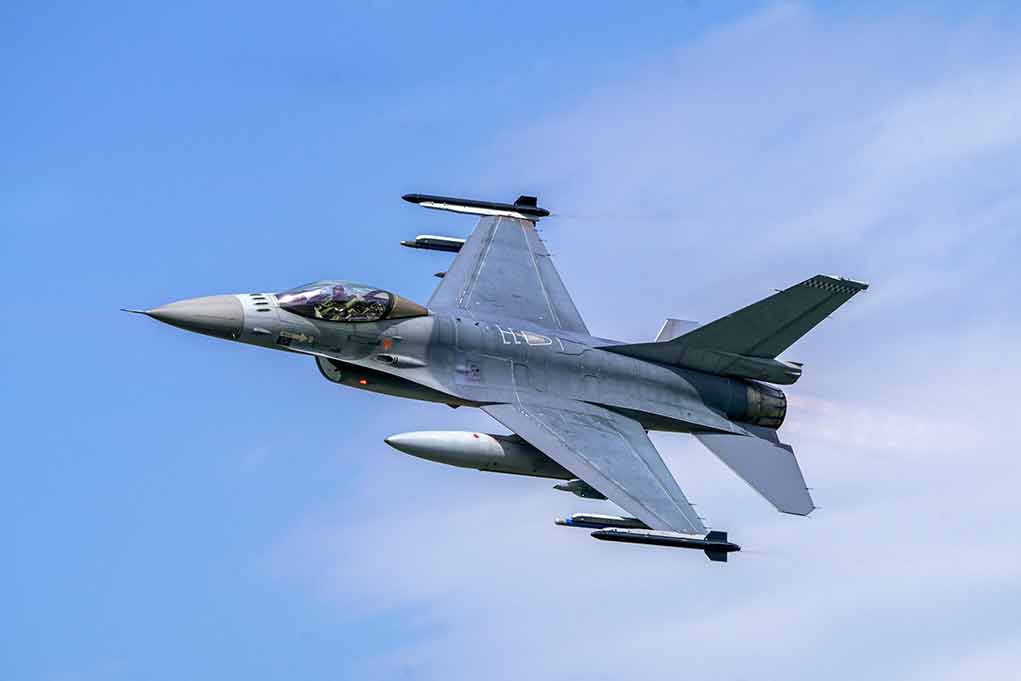
The Netherlands has completed delivery of 24 F-16 fighter jets to Ukraine while American taxpayers foot another massive bill for a foreign war with no end in sight.
Key Takeaways
- The Netherlands has completed its promised delivery of 24 F-16 fighter jets to Ukraine, with the final batch departing Volkel Air Base in May 2025.
- The jets are making a strategic stopover in Belgium for final preparations before heading to Ukraine’s frontlines.
- Ukraine has already recorded combat successes with previously delivered F-16s, including shooting down Russian cruise missiles and drones.
- Despite the advanced capabilities these jets provide, Ukraine has already lost at least two F-16s – one to pilot error and another during combat operations.
- The Netherlands, Denmark, and the United States are leading an international coalition to supply and support Ukraine’s new F-16 fleet with training, spare parts, and ammunition.
Netherlands Completes F-16 Transfer to Ukraine
The Netherlands has finalized the delivery of its pledged 24 F-16 fighter jets to Ukraine, marking a significant milestone in Western military aid to the war-torn country. The final batch of jets departed from Volkel Air Base in May 2025, less than a year after the initial deliveries began in July 2024. These sophisticated aircraft are intended to replace Ukraine’s aging Soviet-era planes and provide critical air defense capabilities against persistent Russian attacks. The jets are making a strategic stopover in Belgium for final preparations before continuing their journey to Ukraine’s frontlines.
“Due to the daily Russian airstrikes, the F-16s are vital for Ukraine,” said Defence Minister Ruben Brekelmans.
Strategic Importance and Operational Impact
The F-16s represent a dramatic upgrade for Ukraine’s air force, which has been struggling to counter Russia’s superior air capabilities throughout the conflict. Unlike Ukraine’s Soviet-era aircraft, the F-16s are compatible with NATO weapons systems and offer advanced targeting capabilities, better battlefield awareness, and greater combat range. Ukrainian forces have already demonstrated success with the jets, downing numerous Russian cruise missiles and drones. This capability is crucial as Russia continues to launch large-scale aerial assaults on Ukrainian infrastructure and civilian areas.
Logistical Challenges and Security Concerns
The transfer of these advanced fighter jets has been conducted with extraordinary security measures. Details regarding the delivery timeline and routes have been kept highly confidential to prevent Russian intelligence from targeting the valuable assets during transport. Ukrainian pilots and ground crews have undergone intensive training at the European F-16 training center in Romania to prepare for operating and maintaining these sophisticated aircraft. Despite these precautions, Ukraine has already lost at least two F-16s – one in a crash attributed to pilot error and another during combat operations.
International Coalition Support
The Netherlands is leading the international coalition providing F-16s to Ukraine, working in close coordination with Denmark and the United States. The Biden administration has contributed significantly by supplying disused American F-16s for spare parts, enabling more efficient maintenance of the operational fleet. Beyond the aircraft themselves, Ukraine will continue receiving critical support in the form of training, spare parts, ammunition, and fuel from its Western allies. This sustained support is necessary as the conflict with Russia shows no signs of resolution.
American Taxpayer Burden Continues to Grow
While European nations like the Netherlands are delivering these high-value military assets, American taxpayers continue bearing the financial burden of sustaining Ukraine’s war effort. President Trump has repeatedly questioned how long the United States can afford to fund a foreign conflict with no clear exit strategy while American citizens struggle with inflation and economic challenges at home. The F-16 program represents just one component of the massive military aid packages flowing to Ukraine, with each fighter jet valued at approximately $30 million, not including the ongoing costs of maintenance, ammunition, and training.












